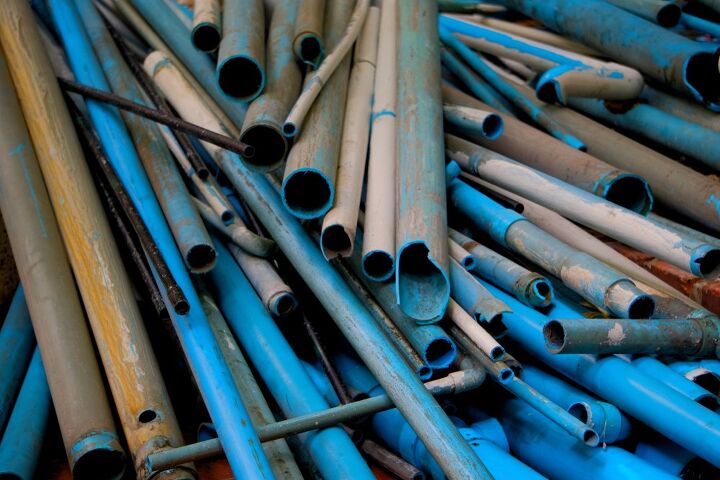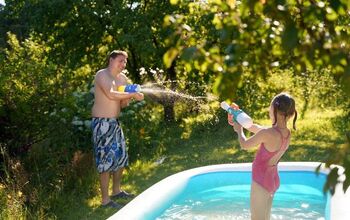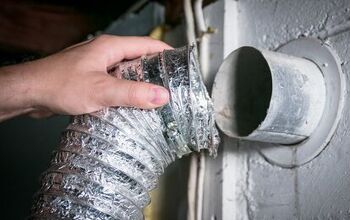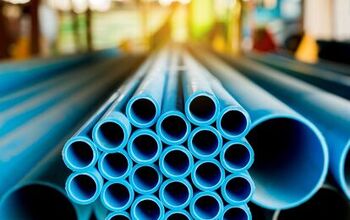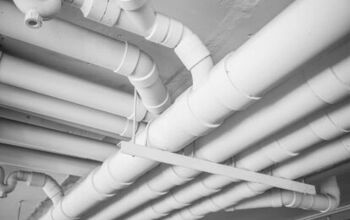Where Can I Recycle PVC Pipe? (Find Out Now!)

Home improvement projects often leave you with a pile of rubble and waste. Finding ways to recycle or reuse this material can be a challenge. This is especially true of products made of PVC. Many landfills no longer accept PVC waste. Many homeowners are left wondering where they can recycle PVC pipe waste.
There are very few places to recycle PVC. Recycling PVC is more complicated than dropping the waste PVC in your local recycling bin. PVC is considered a #3 plastic. Most recycling centers aren’t equipped to handle PVC and won’t accept it. PVC contains materials and additives that can be toxic which require special handling to be recycled safely.
While PVC pipe is considered safe to handle and, in many cases, safe for use in potable water systems, disposing of waste PVC can be a problem. If you are faced with waste PVC pipe, your options for disposing of the material may be limited. There are some alternatives to recycling PVC pipe that may help with your problem.
Do You Need a Faucet, Fixture, or Pipe Repair or Replacement?
Get free, zero-commitment quotes from pro contractors near you.

Recycle, Repurpose, Reuse
The three R’s come to mind when dealing with waste PVC products. Recycle, repurpose, or reuse. These three options all provide alternatives to tossing PVC into the waste container and sending it to the landfill.
Recycling – Not as Easy as It May Seem
The chemical makeup of PVC is the biggest problem inhibiting widespread recycling. Several components used in the manufacture of PVC pipe contribute to the toxicity of the waste product. Chief among these components is chlorine. As PVC pipe ages, the polyvinyl chloride can begin to leach away. This creates problems in landfills especially.
Mechanically recycling PVC by grinding the waste material is much safer. However, few recycling companies can manage this process due to the air filtration requirements and other mandates. Some companies use a process of chemical recycling. Chemical recycling is mainly used for heavily contaminated materials, which eliminates them from mechanical recycling.
Repurposing – New Life for Old Products
Waste PVC pipe and, in some cases, PVC pipe removed from plumbing installations can be repurposed. One of the most common projects that repurpose PVC pipe is furniture construction. Many do-it-yourselfers build quite innovative outdoor and patio furniture from PVC pipe repurposed from other projects.
There are hundreds if not thousands of plans on the internet to help you construct PVC furniture. Some manufacturers now offer specialty fittings just for furniture building. Creating interesting designs from what would otherwise be waste material gives pleasure to many people.
Don’t let your imagination stop at creating furniture. The repurposing of PVC can happen almost anywhere in your landscape, garden, or home. Repurposed PVC pipe can be used for trellises or plant stakes in the garden. Some enterprising gardeners have built entire greenhouses from repurposed PVC pipe.
Reuse – Putting PVC Pipe Back to Work
A quantity of PVC pipe pulled from a remodel or repair on your home doesn’t necessarily mean it has reached the end of its useful life. In many instances, that PVC pipe can be reused for other projects.
You should understand that most building codes don’t allow you to reuse PVC pipe in any domestic potable water system. All PVC potable water system installation or repairs must be made with factory new, unused pipe. But think of all the other places you need to move water.
One good example is irrigation systems for your garden or landscape. Used PVC pipe that has not been contaminated by chemicals can be reused in your landscape and garden for irrigation systems.
We Typically Burn Our Trash. Can I Burn my Leftover PVC?
No! Never burn or incinerate PVC. Burning PVC releases toxins into the air in the form of noxious gases. In some cases, the particles that rise with the hot gases are also toxic. The toxic gases rise and contribute to air pollution. If you happen to breathe too much of them, your health could be affected.
The particles from burning PVC can settle out onto the soil around your burn area. Over time, the concentration of these poisons can affect the quality of your soil. If you garden close to your burn area, the plants and vegetables can absorb these poisons from the soil.
In short, you should never burn waste PVC pipe and fittings to get rid of the material.
If Waste PVC is so Dangerous, Isn’t It Dangerous to Use?
Surprisingly, despite the harmful qualities of waste PVC, it is perfectly safe when PVC pipe is used correctly. After manufacturing, PVC pipe and fittings are extremely stable and inert. This makes PVC pipe safe for potable water supplies and other food-grade purposes.
PVC is used in many different ways in the food manufacturing, delivery, and storage industries. The water system in many homes is plumbed with PVC pipe. When installed properly, PVC pipe is an extremely economical and safe material. It is only during the recycling process that problems are encountered with the toxic materials released.
What Makes PVC Pipe So Popular?
PVC pipe is one of the most used construction materials for plumbing. Several factors contribute to this popularity. Among these factors are:
PVC Is Economical to Use
Compared to other types of piping, PVC is cheap to use and install. Metal tubing such as iron, steel, or copper can be much more expensive. PVC pipe is a budget-friendly alternative in many plumbing situations.
PVC Offers Strength and Durability
PVC, for its weight, is relatively strong. When formed into pipe, the strength is increased. This makes PVC pipe attractive for many other uses besides plumbing. You can purchase replacement windows and doors made from PVC. Greenhouse frames are available made from extruded PVC forms.
PVC also has a reputation for being durable and resisting wear and tear. Some people worry about PVC that is exposed to direct sunlight. Most PVC is quite resistant to sunlight and fares well. You can purchase PVC pipes and fittings with extra additives to resist UV light.
Versatility and Ease of Use
Installing PVC pipe is quick and relatively easy. PVC pipe is joined using solvent cement to create a watertight joint at the fittings. Almost anyone can learn to create a solid PVC joint using this method.
PVC is relatively rigid, but it has enough flexibility to make installation much easier. When compared to installing steel, iron, or copper pipe, PVC is a breeze. Most metal pipe requires special tools and skills. PVC pipe can be installed using hand tools found in most homeowners’ garages.
Do You Need a Faucet, Fixture, or Pipe Repair or Replacement?
Get free, zero-commitment quotes from pro contractors near you.

Recycling PVC, A Bigger Challenge Than You Might Think
Many people think that recycling plastic is an easy task. You need only drop the plastic into the local blue bin. However, not all plastic is created equally, nor does it recycle easily. To recycle leftover or waste PVC, you must find a recycler who can handle PVC properly. Your other alternative is to repurpose or reuse the PVC pipe for other projects.

Dennis is a retired firefighter with an extensive background in construction, home improvement, and remodeling. He worked in the trades part-time while serving as an active firefighter. On his retirement, he started a remodeling and home repair business, which he ran for several years.
More by Dennis Howard



